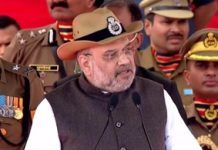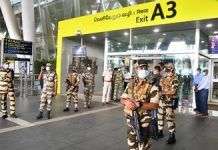Delhi airport will soon get a fleet of six bullet-resistant vehicles (BRVs) equipped with the latest weapons and space for up to four armed personnel to minimise the damage of a terrorist attack. The BRVs, currently undergoing ballistic testing in Ahmedabad, Gujarat, are expected to be deployed out soon. Delhi airport will be the first in the country to have BRVs, followed by Mumbai, Chennai, Ahmedabad and other sensitive airports in the coming months, according to the Central Industrial Security Force (CISF), which provides security to 61 of the 100 operational airports in the country.
Private airport operators are also hopeful of procuring the BRVs in the coming months. The Airports Authority of India (AAI) is in the process of finalising specifications for airports operated by them in connection with the induction of the BRVs.
“The pattern of terrorist attacks has changed the world over. Lone wolf attack is now the latest trend and not hijack. You cannot minimise the damage if you don’t have a bullet proof vehicle,” said a CISF official. “A BRV will help us in neutralising the suspect without exposing our personnel to any danger,” the official said.
The CISF had asked for bulletproof vehicle at sensitive airports following which the Bureau for Civil Aviation Security (BCAS) issued a notification in August 2017 asking airport operators to replace the existing Quick Reaction Team (QRT) vehicles with BRVs.
According to sources, nearly 15 vehicles that are currently part of QRTs and patrol squads are not quick enough to combat a terror attack. The CISF fleet currently includes Scorpio, Bolero, and Gypsy. While Bolero and Gypsy are used for patrolling, Scorpio is mostly used as the QRT vehicle, with trained commandos deployed in it. A CISF official said that the vehicle will not survive in the eventuality of a terror attack. Sedans are used by senior officials for travel. The CISF had in October 2017 conducted a trial of armoured vehicles that can withstand up to 10 kg of explosive and numerous bullets but decided to go with a smaller vehicle for the QRT fleet .







